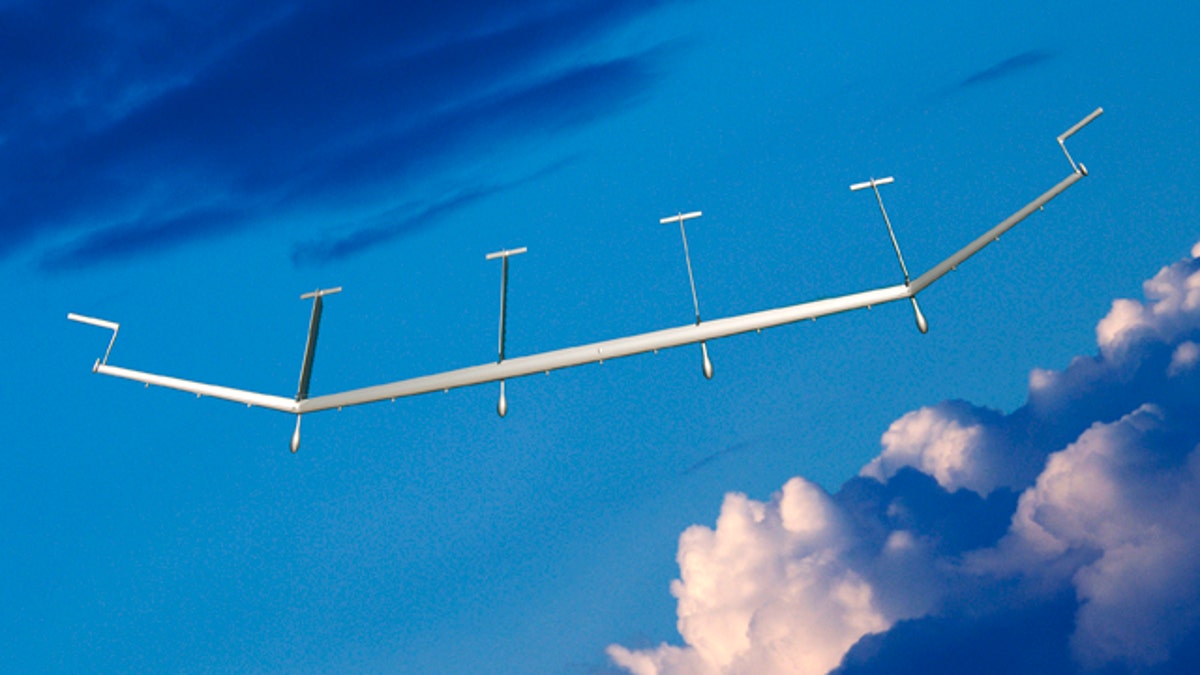
Boeing's SolarEagle spyplane in flight in the clouds, shown in an artist's rendering. (Boeing)
Boeing is developing an astounding new plane -- an unmanned, solar-powered aircraft that can fly for five straight years without stopping.
The U.S. Defense Advanced Research Projects Agency (DARPA) reached an agreement with Boeing last week to create and operate the amazing solar-powered spyplane. The SolarEagle will be constructed for the Vulture II demonstration program under an $89 million contract, aiming to make its first demonstration flight in 2014.
"SolarEagle is a uniquely configured, large unmanned aircraft designed to eventually remain on station at stratospheric altitudes for at least five years," said Pat O’Neil, Boeing Phantom Works program manager for Vulture II.
“That's a daunting task,” O’Neil continued, “But Boeing has a highly reliable solar-electric design that will meet the challenge in order to perform persistent communications, intelligence, surveillance and reconnaissance missions from altitudes above 60,000 feet."
With help from key suppliers, including Versa Power Systems and QinetiQ, Boeing plans a full-scale flight demonstration that shows development of the critical power system and structure. The SolarEagle demonstrator will remain in the upper atmosphere for 30 days during testing, harvesting solar energy during the day that will be stored in fuel cells and used to provide power through the night.
To enhance its capabilities and design, the aircraft will have highly efficient electric motors and propellers -- and a funky, 400-foot wingspan for increased solar power and aerodynamic performance.
The last solar-powered aircraft to break the record for an unmanned plane was the British-designed Zephyr in July. Designed by British defense firm QinetiQ, the Zephyr flew for two weeks non-stop above a U.S. Army range in Arizona before finally landing.
Beyond SolarEagle, Phantom Works is developing several other unmanned prototypes, such as the Phantom Ray -- a fighter-sized, advanced technology demonstration scheduled to make its first flight in early 2011. The Phantom Eye, a hydrogen-powered, high-altitude aircraft designed to stay in the air for up to four days, is another also scheduled to debut in 2011.
